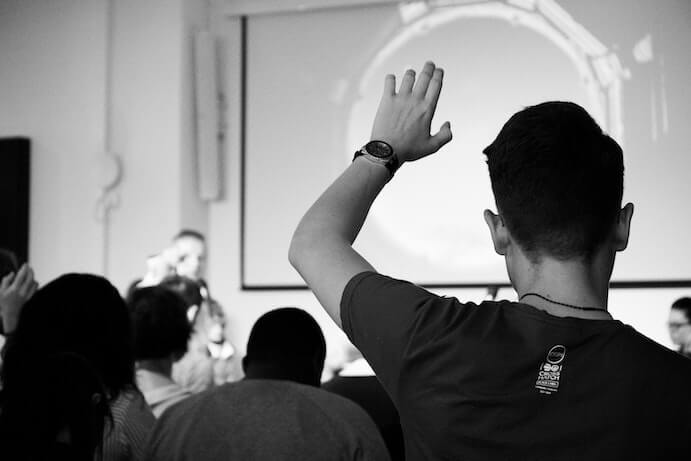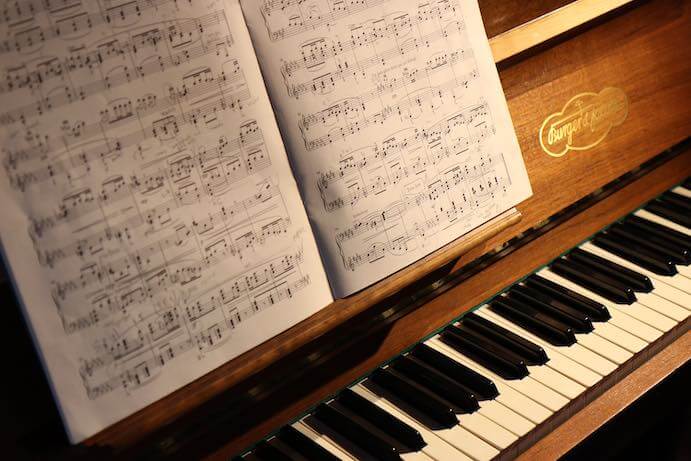The murders of George Floyd, Breonna Taylor, Tony McDade, and Ahmaud Arbery have galvanized protests against police brutality and the policies of a country that has forever held that Black lives don’t matter. For many white people, this has been an awakening to the systemic oppression of BIPOC communities, a situation horrifying both because of its sheer magnitude and because of our long and willful refusal to see it.
Many people throughout our music communities have responded with calls for justice and pledges of allyship in the fight against white supremacy. Yet as we strive to create meaningful, substantive change, we must take care that our efforts actually confront these problems, rather than compound them. Amidst calls for more diversity in our pedagogy, we must recognize that diversity doesn’t lead unfailingly to equity—a diverse curriculum rooted in Western art music is still a curriculum rooted in white supremacy.
Grounding a music degree’s core curriculum in Western art music is an institutional declaration that this style of music is fundamentally more important than others. It’s a statement that a pedagogy based in this singular style provides all the necessary knowledge for understanding “Music,” or at least the music worth knowing. When we make a degree in music contingent on a student’s ability to demonstrate proficiency in Western art music without requiring the same in other styles, we turn stylistic preference into institutional policy.
Attempting to understand something as richly varied as music through the lens of a single style is doomed to yield a monochromatic understanding of what music is and what music can be. This narrow lens then becomes the “neutral” framework with which students approach and attempt to understand other styles of music. Yet this framework is not neutral—Western art music is essentialized as the product of white male genius, and the normalization of this within the classroom is both a reflection and a reinscription of the normalization of our white supremacist patriarchal society.
As I wrote in “Teaching Inequality: Consequences of Traditional Music Theory Pedagogy,” Western art music is not a universal language. It is not a better pedagogical tool, nor a necessary one—it covers some aspects of music well, others poorly, and many not at all. When academics require that any formal study of music start with an intensive study of Western art music, they unduly privilege certain musical elements, and they unduly privilege whiteness and maleness. It’s easy to go from dismissing other styles of music to dismissing the people associated with those styles—the use of Western art music as “evidence” for white superiority is a literal white supremacist talking point. When white supremacist Donald Trump said, “we write symphonies,” it was very clear whom his “we” included, and those who weren’t included have borne the brunt of his abusive policies over the last three years. What we condone and what we condemn in the classroom matters.
We cannot diversify our way out of the deeply entrenched, pervasive whiteness and maleness of Western art music. Rather than reject an inherently flawed framework, we seek to validate it, and we court tokenism in the process.
This is not allyship. This is oppression.
What’s worse, we can point to our now-diversified syllabi and convince ourselves that our work is finished. We can pretend that we’ve achieved justice—we haven’t—and that justice is a static state—it’s not. We can pass off the appearance of doing something in place of actually doing something. We can check a box and leave oppression unchecked.
For those reluctant to bring social justice initiatives into their classrooms, understand that your curriculum is already a political statement about what—and consequently who—is important. If you consider racism, sexism, and other identity-based forms of oppression to be unimportant, or to be other people’s problems, you’re perpetuating racism, sexism, and other identity-based forms of oppression. The default within a white supremacist system is not neutrality, but oppression. Education is never politically neutral.

Photo by Felicia Buitenwerf on Unsplash
When we don’t acknowledge racism, sexism, ableism, class, or sexual preference—even though these all shape the music we study, the lives of those who make it, and the experiences of those who listen—we enable discrimination based on these identities. This has a profound impact on our lives and on the lives of our students. Pretending that we can set aside our humanity while in the classroom ensures that these forms of identity-based oppression will continue. Students learn from us whose voices are important and whose can be disregarded, and this helps determine their view of the world and the ways they engage with other people within it.
We need to embrace a transformative pedagogy, one that helps our students to become better people as well as better musicians. These aren’t mutually exclusive goals, but they’re often framed as such. Most of the people we teach will not become professional musicians, but they’ll each make countless decisions throughout the day that will push us incrementally closer to or further from justice. As educators, it’s not our place to make these decisions for them, but it’s our responsibility to help open their eyes to what’s actually at stake.
So what can we do?
We can start by taking responsibility for our own education, especially as it relates to systemic oppression. Read works by Black writers and thinkers like James Baldwin, Angela Davis, bell hooks, and Audre Lorde. Search for antiracist reading lists and articles on critical race theory (see below for suggestions of where to start). Join conversations, but join as a listener first.
In terms of curriculum, developing a more inclusive approach to our current use of Western art music is essential, but it’s only meaningful if we also change the curriculum to include other styles of music and place them on equal status with Western art music. We don’t have to divest entirely from Western art music, but we do have to divest entirely from the notion of a stylistic hierarchy.
Questioning the curriculum begins with reflecting critically on what it is that we’re actually teaching, the reasons why we’re teaching it, and the reasons why we teach it in this particular way. What biases are we replicating through our pedagogy? How does oppression manifest in our classroom, our department, and our institutions, and what are we doing to disrupt it? These are just a few of the necessary questions to ask ourselves at the start of each semester and throughout the year.
In “Promoting Equity: Developing an Antiracist Music Theory Classroom,” Michelle Ohnona and I argued for the necessity of disrupting the normalization of whiteness by making whiteness visible in the (music) classroom. Michelle and I presented a framework for developing an antiracist music theory classroom, based on centering students and using a polystylistic approach. While our work focused on music theory, I believe the principles of our approach could be modified as necessary to encourage similar changes throughout the music curriculum. My music theory course notes are available here.

Photo by Lorenzo Spoleti on Unsplash
To promote equity, diversity, and inclusion in higher education as a whole, we must go beyond the syllabus and concentrate on identifying and dismantling the barriers that lock BIPOC people out of student, faculty, and administrative positions and lock white people in. White people must speak out decisively against oppressive ideas, policies, and colleagues. We will never have a more equitable society if we are not actively cultivating equity within our own communities.
Music is a social and cultural product, and we need to treat it as such. Compromising with white supremacy and patriarchy simply reinforces white supremacy and patriarchy. I’m sympathetic to the significant barriers to overhauling the way we teach music, but I’m not sympathetic to those who end the conversation because of them.
Coda
The latest volume of the Journal of Schenkerian Studies features a series of responses to Prof. Phil Ewell’s 2019 Society of Music Theory plenary talk, “Music Theory’s White Racial Frame.” Much has already been written about the appalling racist nature of these responses—Prof. Kira Thurman provides some necessary context—and musicians on social media have responded with a widespread and well-deserved condemnation of the majority of the articles, their authors, and the gross misconduct by the editors of the journal, who did not invite Prof. Ewell to respond.
Oppression thrives in silence, and so these online condemnations are critical, especially as they seem poised to bring about changes offline. What’s more critical, however, is fighting for the same principles within your own area of expertise, your department, your institution, among your friends and family, and throughout your life.
The issue of white supremacy within music education is so much larger than Schenker. Focusing only on overt white supremacy like that displayed in the recent Journal of Schenkerian Studies makes it tempting for white people to miss or to dismiss the less overt—though no less pernicious—white supremacy of a department requiring the standard three to four semesters of traditional music theory. How many of the people who condemned the actions of the Journal of Schenkerian Studies teach in a department like this?
I recognize that educators are faced with tremendous structural barriers and perverse incentives designed to perpetuate an unjust and abusive status quo within academia. I also recognize that this unjust and abusive status quo disproportionately harms people already marginalized by identity. Silent sympathies and good intentions do not overcome an inertia of oppression. What’s your next move?
These are resources that I found particularly helpful—may they inspire you in your search for yours.
Sara Ahmed, On Being Included
Michelle Alexander, The New Jim Crow
James Baldwin, Collected Essays
Eduardo Bonilla-Silva, Racism Without Racists
Ta-Nehisi Coates, We Were Eight Years in Power
The Combahee River Collective Statement
Tracy McMillan Cottom, Thick
Angela Davis, Blues Legacies and Black Feminism
Robin DiAngelo, White Fragility
Engaging Students
Philip Ewell, “Music Theory’s White Racial Frame”
Fights We Done Already Had, Dangit
Paulo Freire, Pedagogy of the Oppressed
Ethan Hein, “Toward a Better Music Theory” and “Teaching Whiteness in Music Class”
bell hooks, Teaching to Transgress: Education as the Practice of Freedom
Adrienne Keene, Introduction to Critical Race Theory course page
Ibram Kendi, Stamped From the Beginning and How to Be an Antiracist
Erika Lee, America for Americans
Audre Lorde, Sister Outsider
The Oxford Handbook of Social Justice in Music Education
Tara Rodgers, Pink Noises
Cornell West, Race Matters





















